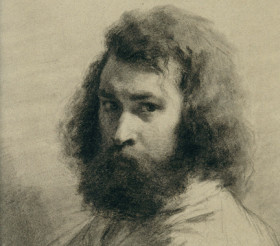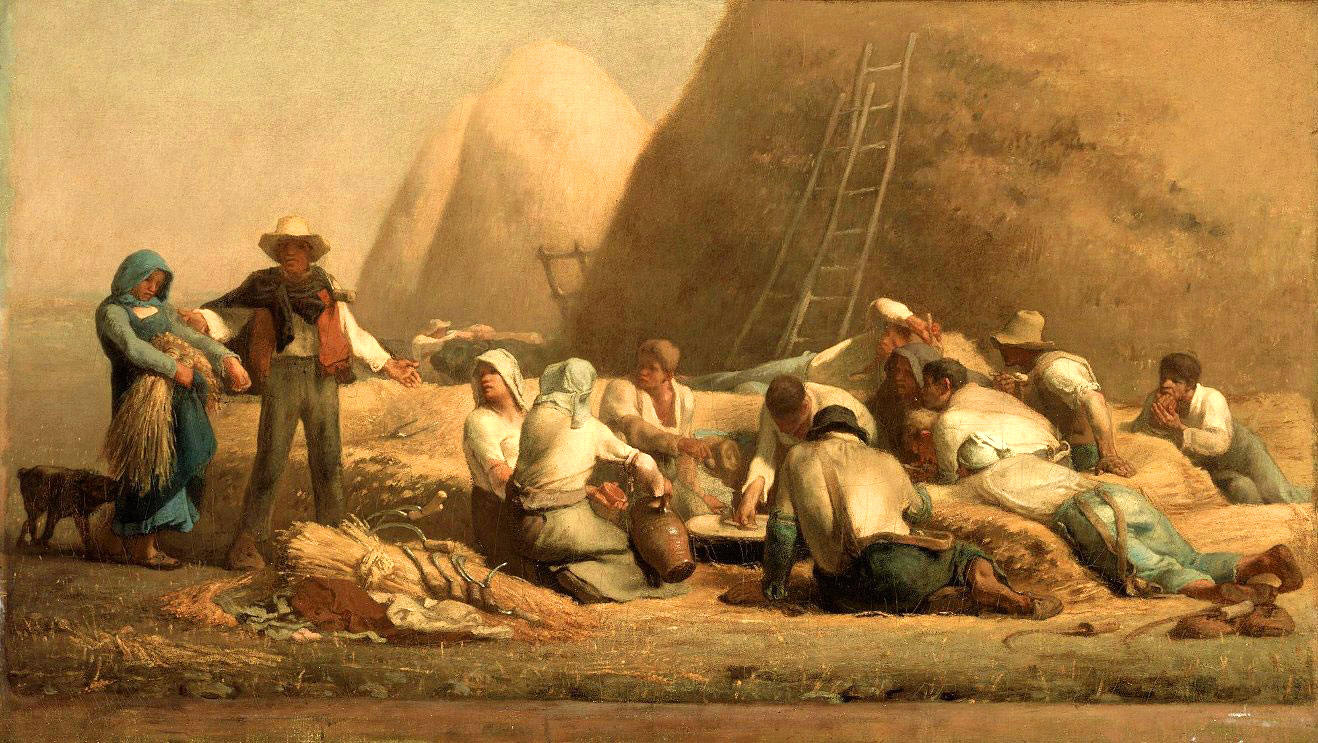 Every great artist who enjoyed the richness and fame during their time doesn’t necessarily remain famous in later times. Actually, most of the artists become anonymous in general life after certain period. Though, they stay in the history-books, museums or in the people’s mind who really dig deep to know about them.
Every great artist who enjoyed the richness and fame during their time doesn’t necessarily remain famous in later times. Actually, most of the artists become anonymous in general life after certain period. Though, they stay in the history-books, museums or in the people’s mind who really dig deep to know about them.
Jean Francois Millet was such a French artist who got revered even by the other prominent contemporary artists of his time. He was one of the founders of the Barbizon school in France, where he- with other founders- emphasized the art-movement of Realism. Though, he is an artist with some facts that after knowing them you would understand more about the background happenings among the artists in the art-world.
Expertizing the art
Millet was a French artist born on 4th October, 1814, in the village Gruchy, Normandy, France. Before starting his career as a professional portrait painter, he studied with a portrait painter Paul Dumouchel in 1833. Later on in 1835, he started learning under Lucien-Theophile Langlois, who was a French Neo-classical painter who served Napoleon Bonaparte in his times.
After moving to Paris in 1840, there he officially began his career as a professional portrait painter. There he become to acquaintance with other adept painters like Constant Troyon, Narcisse Diaz and Charles Jacque, who later on became the co-founders of the Barbizon school they later established to teach the techniques of realism with some other co-founders. In Paris, his major works were Oedipus Taken down from the Tree, Winnower and The Captivity of the Jews in Babylon. There is a little story about the last work.
As the art-critics and public disliked the painting, the painting got missing after times. But in 1870, when his painting The Young Shepherdess was being examined, the researchers discovered that it was painted over the The Captivity of the Jews in Babylon. The reason is claimed as the scarcity of the materials because of the Franco-Prussian War.
Contribution in the Barbizon School and Realism
Barbizon school was active during the time-period of 1830 to 1870 and Millet was one of the major contributors in the school. Basically, the school consisted painter who tried to take the art towards the reigns of realism.
From his side, Millet gave the idea to extend landscapes with including figures into them. Figures like peasants and their lives in the fields. The Gleaners, his one of the major paintings, was produced during the time, in which three gleaner women were working in a field. Gleaners were the poor women who were allowed to pick up remained grain after the main harvesting was done. It was a symbolic portrayal of deviation between the rich and the poor.
Producing masterpieces
Apart from The Gleaners, one more major work during the time was The Angelus, a simple portrayal a couple praying in the middle of a farm. In its depiction there was a more spiritual approach. There was a church in the background and the couple was greeting god in a little bowed manner. There couldn’t be another interpretation of the scene by a normal thinking.
But what if a person with absurd thinking sees that picture? Famous artist Salvador Dali saw that painting in his class while he was studying and from the time, he got a certain impression on his mind. Later on, he expressed his thoughts about the painting that it contains a surpassed sexual aggression and had another opinion that the couple was praying over a buried child. When an x-ray test was practiced on the painting, researched found a mysterious shape around the basket of potatoes, which had striking similarities with a coffin. Though, nothing is sure.
Another work which can’t be left out due to its importance proclaimed by the artist himself is Harvesters Resting (shown below). Millet called this painting his most important work and intended to rival the works of his ideals Michelangelo and Poussin. The painting depicted – as the title suggests- some harvesters taking rest on a near a pile of grains. His work shows off as we can see his labor in every portion of the scene.
Impact on other artists
Maybe his name is not as much revered as other famous artist but you would be surprised by knowing hat his work had some influences on the artist about whom you have heard about. Some notably well-known artists had inspired from Millet for one or more of their works.
Mark Twain’s play “Is He Dead?” represented Millet as his lead character in which the character plays dead to get recognition. Poet Edwin Markham wrote the well-known poem “The Man with the Hoe” after getting inspirations from Millet’s work L’homme a la houe. Van Gogh learned some of his painting tricks from millet until he got impressed by the Impressionism. Claude Monet got some influential points from his works for the painting of Normandy. And about Salvador Dali, we have mentioned above that how he got some impression by the artist’s work at the early age. After growing up, he recreated the painting in his own absurd style.
At the twilight of his life, he got selected as a jury member of a Salon (annual exhibition of living artists held by Royal academy of Sculpture and Painting in Paris) contradictory to the fact that his first submission to such salon was rejected. He also got honored with Chevalier de la Légion d’Honneur, a Legion of Honor of France.
Unlike many artist, his last years were fulfilled with auspicious wealth and recognitions After marrying to a woman named Catherine on 3rd January, 1875 -whom he knew for a long time- just after 17 days of marriage Jean Francois Millet died.

